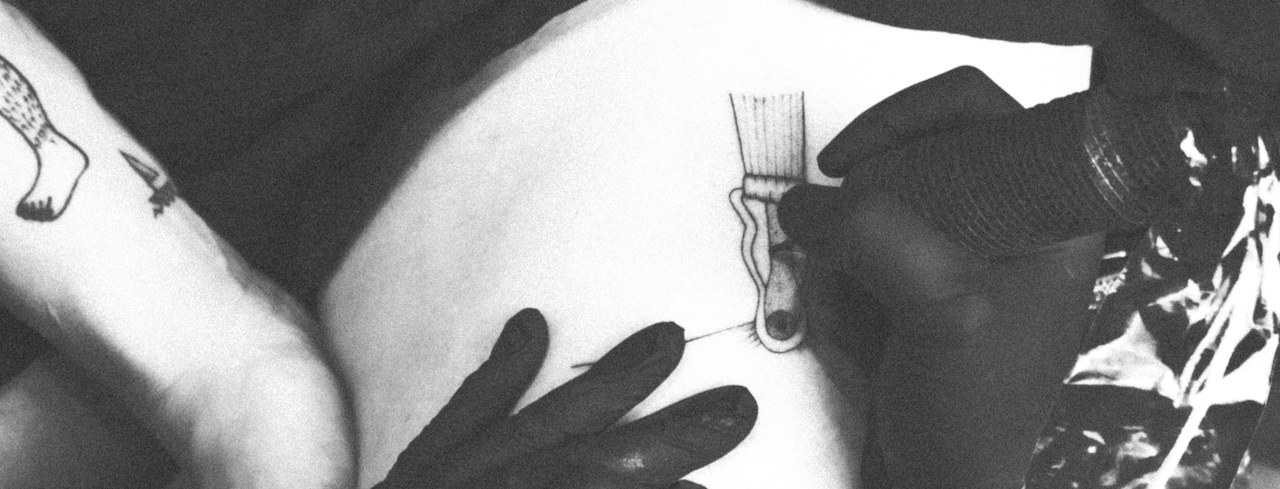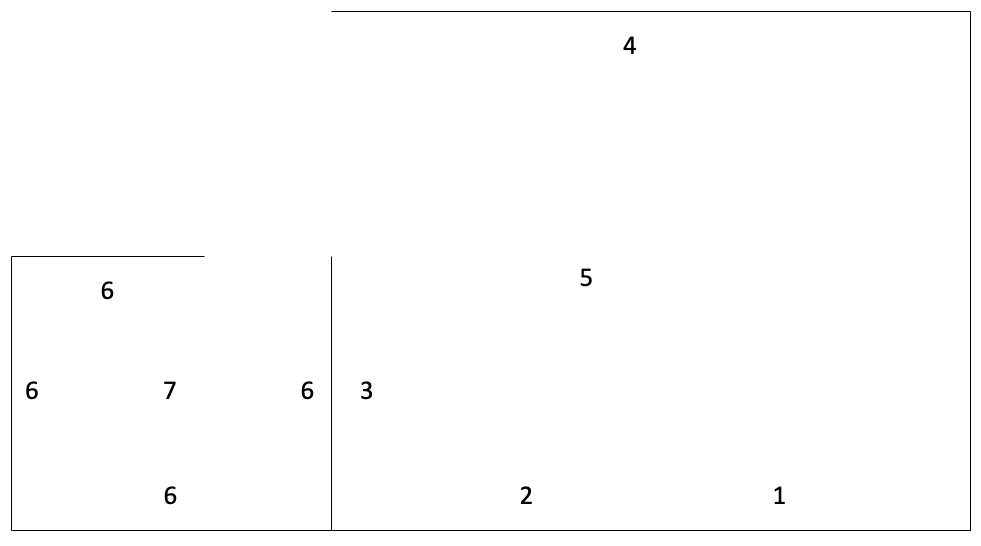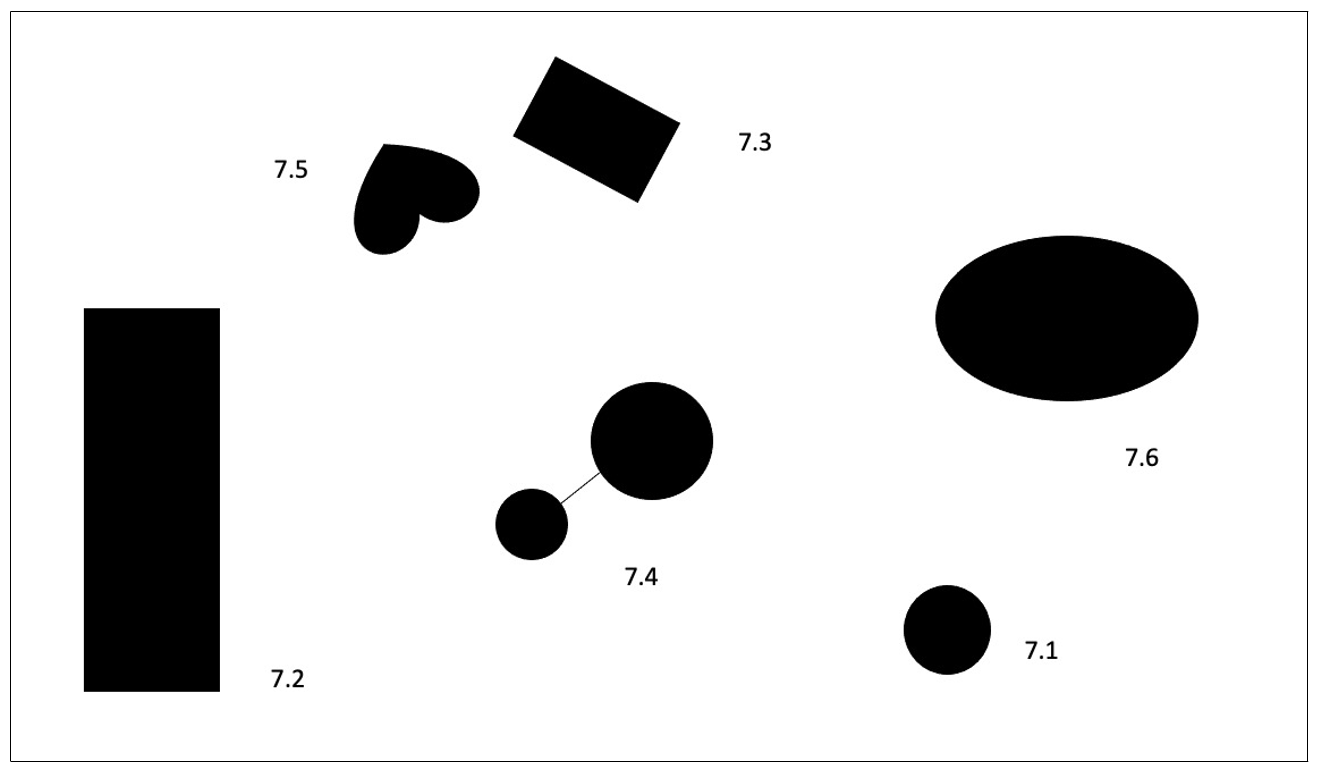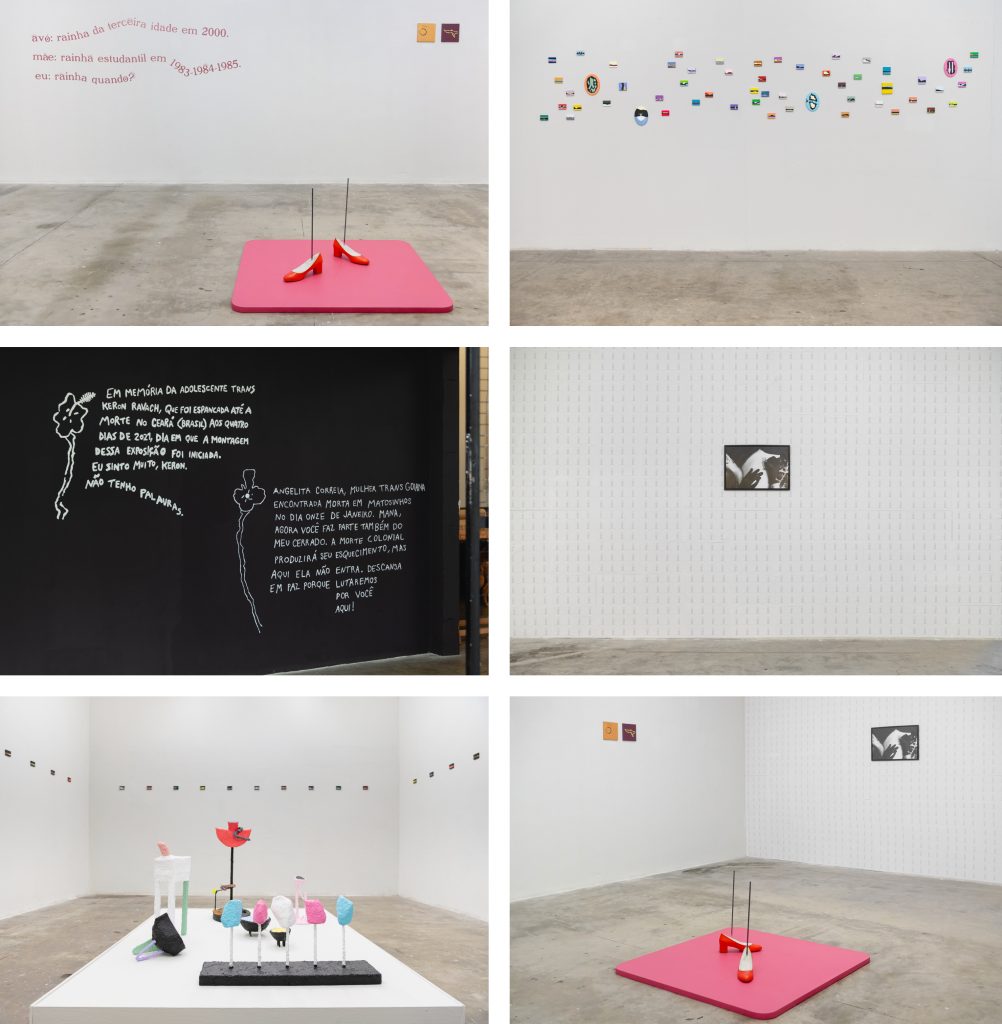
In memory of the young trans person Keron Ravach, who was Beaton to death in Ceará (Brazil) on the 4th of January of 2021, the very same day the exhibition installation began. I am so sorry, Keron. I have no words.
Angelita Correia, mulher trans goiana encontrada morta em Matosinhos no dia onze de janeiro. Mana, agora você faz parte também do meu cerrado. A morte colonial produzirá seu esquecimento, mas aqui ela não entra. Descansa em paz porque lutaremos por você aqui.
Often called Princesinha do Cerrado [Little Princess of the Cerrado] during the 1930s, Inhumas, Goiás, Brazil is the city where transdisciplinary artist Hilda de Paulo was born and lived until her teen years. In this exhibition, filled with confessions that reiterate the autobiographical aspect of these works, the artist resumes a previously unfinished project us autofiction in order to discuss her transsexuality and the way societies deal with dissident bodies.
In her investigations of color in painting, which is materialized in traditional mediums, as well as in unconventional ones, there are references to elements from nature that point towards cosmic forces, indicating that human existence is a small form of life in a much larger universe – precisely to emphasize the interdependence of everything that surrounds us.
Autofictions by Hilda de Paulo, an artist of encounters
I am a fiction.
Hilda de Paulo
Hilda de Paulo ventures out on new painting paths with the exhibition Princesinha do Cerrado [Little Princess of the Cerrado], curated by Suzana Queiroga. It presents the artist’s poetic reverberations towards a vast array of material possibilities. Among the works in the show is the diptych J.A.D (2019), composed of two canvases measuring 20 x 20 cm each. One outlines the silhouette of a body in gray and yellow, its inner mass confused with the surface of a dark red shade, where the body rests. The other holds the word “caos” [chaos], drawn in a curved fashion and in multiple colors; below the inscription we see an irregularly thick circle traced in black. The letters and the shape – similarly to its neighboring canvas – are filled with a golden color that also tones the surface of the painting.
A dead body: that is what J.A.D depicts. Hilda de Paulo began this piece during an artistic residence program in Brazil, in 2019. “I was drafting a presentation about my artistic process for the residence’s public. Every time I talk about my artistic research, I begin by showing photos of where I was born. I googled the name of my city and, unfortunately, there was an image of a dead body – the body of an 18-year-old young man who was murdered in my hometown, who I had known since we were kids. His name was João Antonio Donati” [1]. “Young gay man murdered”, the newspapers headlines read all across Brazil, in a tragedy – with its following media circus – surrounded by multiple violences and “official accounts”, which the artist deem deemed very unreliable. “Off the record”, through the streets of Inhumas, in Goiás, Brazil, people say Joãozinho was going to testify in a police investigation against a local cop. The domestic chit chat propagates that that was the real reason behind his murder.
In Hilda de Paulo’s narratives, the murder of her childhood friend echoes the violences she herself suffered as a child and as a teenager in Inhumas. These violences are expanded through the artist’s words to also encompass the wars that destroy the memory of material and immaterial cultures, the European borders that assassinate refugees, the growing intolerance from religious sects, the policemen who kill trans people, black people, children… with the mournful conclusion being “humanity is shipwrecked” right before her eyes [2]. The golden circle in J.A.D appears as an homage to João Antônio, with the small dots in one of its extremities evoking the shape of a floral wreath, like the ones usually placed on coffins in tribute of the deceased. The “chaos” inscription that hovers over it reminds us of the confusion caused by the pain and the grief associated with death – and its images. That word translates and produces psychological punitive frameworks that kill bodies and pleasure.
Voices from decades ago, when Brazil went through its last (will it be our last?) civic-military dictatorship (1964-1985), also resonate. In a moment of dispossession, of authoritarian chaos, as Anna Bella Geiger and Guilherme Samy suggest, we must appropriate the chaos, “because we’re inventing it inside, and outside, ourselves. Inside us through the dismantling of an innocuous mental structure that is unable to realize the experience of the present; outside us due to the feasible participation in present times, seeking to know the direction of things”) [3]. These words are restored in the face of Hilda de Paulo’s artistic practice.
Times are folded into the artist’s works, multiplied in countless small rectangles measuring 5 x 7 cm each, divided into day and night. The body of J.A.D is transmuted into landscapes of ever-changing colors and shapes, inhabited by dense constructs of the once empty body. Bodies and landscapes are indivisible in the creation of Princesinha do Cerrado, which, one must not forget, is the nickname that was given to the artist’s hometown in the 1930s. Inhumas permeates the exhibition space, embodies the artist’s personal childhood memories – now repositioned in the public/artistic realm –, transforming them into the Via Láctea [Milky Way] from the single by Brazilian musicians Céu and Liniker, through which one imagines becoming “the sky in reverse”.
“I destroy my past and, afterwards, I rebuild it in my poetic creative universe. All my works are strictly related to my biography.” [4] Hilda de Paulo’s statement brings her artistic gestures close to Louise Bourgeois in doings, undoings and redoings of works that mobilize the narrative of the self. In a contemporary feminist sense [5], this relates to the fragmented autobiographical narrative that emerges in elements such as the images of the self, the titles of the works, the stories told by the artist and more… Hilda de Paulo creates pieces in which her psychological and corporeal experiences –marked by constructions of gender – are made evident in movements that destabilize fixed identities, in a continuous process of recreating oneself.
The documentation of a tattoo on her leg, a thinly traced garter belt that reminds us of VALIE EXPORT, is also part of the exhibition. VALIE EXPORT investigated the production of images, exploring her own body as an artistic instrument. Hilda de Paulo told me, during one of our conversations regarding reperformance concepts, that art critic Marvin Carlson said that EXPORT developed “an approach to performance called ‘feminist action’, which pursued a similarly fractured agenda, ‘seeking to substitute the equation material = body = nature for body = social construct = transfigured nature’” [6].
In Hilda de Paulo (Depois de VALIE EXPORT) [After VALIE EXPORT] (2020), the artist mobilizes a sign associated with an universe historically and culturally constructed as feminine, embedding it into her own skin, and updating the performance as transfeminist. The tattooed garter belt takes on meanings of seduction and of oppression, in a tense game where hetero-cis-normative codes are challenged, expanding the meanings of womanhood. The socially constructed body, as a fixation, is the expressive dimension of this work, which is part of an ongoing series titled Hilda de Paulo (2020-).
There’s a statement – which also serves as the exhibition’s epigraph – “avó: rainha da terceira idade em 2000; mãe: rainha estudantil em 1983-1984-1985; eu: rainha quando?” [“grandmother: elderly beauty queen in 2000; mother: student beauty queen in 1983-1984-1985; me: beauty queen when?”], that thickens the layers of transfeminist meanings in Hilda de Paulo’s artistic practices. It also integrates the series Hilda de Paulo (2020-), underlining the artist’s ventures into different mediums. It is an excerpt from an autofiction essay in process – it has a somewhat “surgical” aspect, the artist says. The essay continues: “my grandmother was a beauty queen, my mother was a beauty queen, is it possible for me to be a beauty queen? So, inside this CIStem [N.T.] we live in, we are no entitled to this tradition” [7]. It is also from this autofictional essay that Hilda de Paulo got the title for this exhibition: Princesinha do Cerrado.
The series, so far, also encompasses a painting-object – Hilda de Paulo (Sapatos) [Shoes] (2021) – created from another important element from the cultural repertoire associated with femininity in modernity: red high heels. Immediately associated with seduction, it evokes the fairy tale “The Red Shoes”, also known as “The Devil’s Dancing Shoes” and “The Red-Hot Shoes of the Devil”, widely known in the version by Hans Christian Andersen [8]. Among feminists, the image of the red feet, exhausted from dancing, is connected to the struggles of becoming an artist.
Margaret Atwood, in her novel Lady Oracle (1976), reminds us of the punishment for those who dared to desire dance: “The true little red shoes, the feet punished for dancing”. Filled with concrete in order to support the steel rods that are also fixed in the pink colored rounded plank beneath, Hilda de Paulo’s shoes evoke the weight of fixed identities. Nonetheless, their creator, Atwood, “deconstructs the feminine identity, always on the lookout for the ways one can weave and unravel oneself, using materials that culture provides” [9]. Similarly to the writer’s creative process, Hilda de Paulo redraws herself and her own art, freeing herself from entrapments and mobilizing cultural objects from the most various origins.
Se não puder (também) dançar, esta não é a minha revolução. [If I can’t (also) dance, this is not my revolution.]. It was through this almost made-up statement by anarchist Emma Goldman (or was it Hilda de Paulo?), that our paths crossed – mine and the artist’s. We shared, from the beginning, a passion for practices of freedom and liberty. But there is another dimension to those words: the pleasure of dancing with others, which is also solidified in the relation with the sculptures from the series titled Eus [Mes] (2019-2021), composed of works such as Peitinhos. De Hilda de Paulo para Tales Frey. [Boobies. From Hilda de Paulo to Tales Frey.] (2020); Para sempre juntas e com sorte de termos uma à outra. De Hilda de Paulo para Suzana Queiroga. [Together forever and lucky to have each other. From Hilda de Paulo to Suzana Queiroga.] (2020); Bixa-Travesty. De Hilda de Paulo para Tales Frey. [Tranny-Fag. From Hilda de Paulo to Tales Frey.] (2020); Queda de Tensão no Traje da Dança Serpentina de Loïe Fuller. De Hilda de Paulo para Grasiele Sousa. [Voltage Drop in Loïe Fuller’s Serpentine Dance Costume. From Hilda de Paulo to Grasiele Sousa.] (2020); and Monumento às Nossas Corpas. De Hilda de Paulo para A Xavier, Alice Yura, Maria Diogo, Maria Júlia, Maria Lucas, Mavi Veloso, Pedro Galiza e Tiago Lêdo. [Monument to our bodies. From Hilda de Paulo to A Xavier, Alice Yura, Maria Diogo, Maria Júlia, Maria Lucas, Mavi Veloso, Pedrx Galiza and Tiago Lêdo.] (2020).
Created from papier-mâché casts of kitchen utensils filled with polyurethane foam and covered with a mix of white glue, acrylic paint and hot glue, these sculptures take on different shapes, becoming body-objects. The first is titled: Flô. De Hilda de Paulo para Alice Yura, Alícia Medeiros, Ana Pereira, Ana Pigosso, Bruna Costa, Camilla Braga, Carol Frey, Celeste Cerqueira, Cristina Mateus, Catarina Lourenço, Daniela Labra, Francesca Rayner, Gabriela De Laurentiis, Grasiele Sousa, Isabeli Santiago, Jaqueline Lodi, Julia Lima, Katiana Rangel, Leika Morishita, Letícia Maia, Lizi Menezes, Lúcia Helena, Lucivânia Almeida, Luísa Sequeira, Maíra Freitas, Marcela Tavares, Maria Lucas, Maria Luis Neiva, Mariana Manhães, Monique Bernardine, Nara Reis, Olga Machado, Paola Frey, Phiphi Molla, Pollyana Quintela, Priscilla Davanzo, Rute Rosas, Sara Cunha, Sara Monteiro, Silvana Frey, Sílvia Póvoas, Susana Abreu, Suzana Queiroga, Tânia Dinis e Zélia Figueiredo. [Flower. From Hilda de Paulo to Alice Yura, Alícia Medeiros, Ana Pereira, Ana Pigosso, Bruna Costa, Camilla Braga, Carol Frey, Celeste Cerqueira, Cristina Mateus, Catarina Lourenço, Daniela Labra, Francesca Rayner, Gabriela De Laurentiis, Grasiele Sousa, Isabeli Santiago, Jaqueline Lodi, Julia Lima, Katiana Rangel, Leika Morishita, Letícia Maia, Lizi Menezes, Lúcia Helena, Lucivânia Almeida, Luísa Sequeira, Maíra Freitas, Marcela Tavares, Maria Lucas, Maria Luis Neiva, Mariana Manhães, Monique Bernardine, Nara Reis, Olga Machado, Paola Frey, Phiphi Molla, Pollyana Quintela, Priscilla Davanzo, Rute Rosas, Sara Cunha, Sara Monteiro, Silvana Frey, Sílvia Póvoas, Susana Abreu, Suzana Queiroga, Tânia Dinis and Zélia Figueiredo.] (2019). In it, two figures are placed on the same pedestal, united, growing closer together: there is the “idea of an encounter” between “two beings, two presences”, that artist told me. The flower reminds us of a delicate gesture towards others, of a desire for closeness and for libertarian social constructs – implied in all of Hilda de Paulo’s practices.
The artist establishes a poetic of challenges – of not accepting as valid; of contesting, of rebutting, and of non-confrontation –; of bordering, of limiting, and of confining [10]. Princesinha do Cerrado invites us to dive into expanding artistic practices, countless possibilities of new relationships, combinations, formations, and we can’t refuse this invitation. In sync with transfeminist academics and activists, Hilda de Paulo introduces possibilities “for the construction of new ways of existing in the world, new relations with desire, with the body, the identities and the categories of comprehending reality”, to quote Helena Vieira [11]. With her willingness to face herself – reflexivity – and to build narratives and ways to connect, the artist affects us. On my part, I venture here in writing a curatorial essay, and I couldn’t imagine a more joyful collaboration.
The autobiographical and/or autofictional dimensions of her work carry the libertarian sense of creating oneself, just like other authors from the past, such as Gertrude Stein and her book “Everybody’s Autobiography” or, more recently, such as Amara Moira and her “E se eu fosse puta” [If I were a whore], as well as Virginia Woolf, Carolina de Jesus, Toni Morisson, Gabriela Leite, Virginie Despentes and so many others who craft their own lives through creating narratives about an ever expanding self. Hilda de Paulo follows those paths, merging them with visual arts. Princesinha do Cerrado asks us to enter the artist’s autofictions, in a world with multiple shapes and materials: a world ruled by abundant and generous relationships.
Gabriela De Laurentiis, December 2020
NOTES
[1] Conversation via WhatsApp between Hilda de Paulo and Gabriela De Laurentiis, December 17, 2020. Freely translated by Julia Lima from the original: “fui preparar o roteiro de uma fala sobre meu processo artístico para apresentar ao público na residência. Sempre que vou falar da minha pesquisa em arte, inicio mostrando fotografias de onde nasci. Coloquei o nome da minha cidade no Google e, infelizmente, havia a imagem de um corpo, de um corpo de um adolescente de dezoito anos que foi assassinado na minha cidade natal e que eu conhecia desde criança. Seu nome era João Antonio Donati”.
[2] Cf. HENRIQUE, J. C. “Entrevista com Paulo Aureliano da Mata”. eRevista Performatus, Inhumas, Ano 4, n. 15, Jan. 2016.
[3] GEIGER, A. B. & SAMY, P. G. “Dialética e Metavanguarda (II)”. Jornal do Brasil, Rio de Janeiro, 1970. Freely translated by Julia Lima from the original: “porque o estamos inventando dentro e fora de nós. Dentro de nós pelo desmantelamento de uma estrutura mental inócua e insuficiente para fazer a experiência do presente; fora de nós pela participação possível no tempo presente, buscando conhecer direções”.
[4] HENRIQUE, J. C. “Entrevista com Paulo Aureliano da Mata”. eRevista Performatus, Inhumas, Ano 4, n. 15, Jan. 2016. Freely translated by Julia Lima from the original: “Eu destruo meu passado e em seguida o reconstruo no meu universo poético de criação. Todos os meus trabalhos estão estritamente relacionados com a minha biografia”.
[5] ARFUCH, L. O Espaço Biográfico. Dilemas da Subjetividade Contemporânea. Rio de Janeiro: UERJ, 2010; RAGO, M. A Aventura de Contar-se: Feminismos, Escrita de Si e Invenções da Subjetividade. Campinas, SP: Unicamp, 2013; TVARDOVSKAS, L. S. “Autobiografia nas Artes Visuais: Feminismos e Reconfigurações da Intimidade”. Labrys, Études Féministes, jan.-jun. 2010.
[6] CARLSON, M. Performance: Uma Introdução Crítica. Belo Horizonte: UFMG, 2010, p. 189. Freely translated by Julia Lima from the original: “uma abordagem da performance chamada de ‘ação feminista’, que perseguia uma agenda fraturada similar, ‘procurando substituir a equação material = corpo = natureza, por corpo = construção social = natureza transfigurada’”.
[N.T.] CIStem is a wordplay (relatively common in Portuguese language concerning gender studies) between the terms “system” and “cisgender”, implying the existence of a cisgender-normative system of prejudice in society.
[7] Conversation via WhatsApp between Hilda de Paulo and Gabriela De Laurentiis, December 20, 2020. Freely translated by Julia Lima from the original: “minha vó foi rainha, minha mãe foi rainha, será que também posso ser rainha? Mas eu não sou uma mulher cis. Então, dentro desse CIStema que vivemos nós não temos direito a essa tradição”.
[8] PINKOLAS, E. Mulheres que correm com os Lobos. Rocco: Rio de Janeiro, 1999, p. 160-161.
[9] TELLES, N. Délia: Uma ‘Intuição do Instante’. Nashville: AATSP, 1988. Freely translated by Julia Lima from the original: “é uma desconstrutora da identidade feminina, sempre alerta para a maneira de tecer e desenredar a si mesma, usando o material que a cultura coloca à disposição”.
[10] hooks, bell. Art on My Mind: Visual Politics. New Press: New York, 1995, p. 77-78.
[11] VIEIRA, H. “O Transfeminismo com Resultado Histórico das Trajetórias Feministas”. Em: HOLANDA, Heloisa Buarque de (Org.). Explosão Feminista. Companhia das letras: São Paulo, 2018, p. 337. Freely translated by Julia Lima from the original: “para a construção de uma nova forma de estar no mundo, novas relações com o desejo, o corpo, as identidades e as categorias de intelecção do real”.
ARTWORKS

1) Hilda de Paulo, avó: rainha da terceira idade em 2000; mãe: rainha estudantil em 1983-1984-1985; eu: rainha quando? [grandmother: elderly beauty queen in 2000; mother: student beauty queen in 1983-1984-1985; me: beauty queen when?], 2021. Sticky-backed plastic, 230 x 75 cm;
2) Hilda de Paulo, J.A.D., 2019. Acrylics on canvas, 20 x 20 cm each;
3) Hilda de Paulo, Hilda de Paulo (Depois de VALIE EXPORT) [After VALIE EXPORT], 2020-21. Photography, 60 x 40 cm; Installation of Wheatpaste, 470 x 290 cm aprox.;
4) Hilda de Paulo, da série Dia [from the series “Day”], 2020. Acrylics on canvas, 5 x 7 cm each; Hilda de Paulo, Em Umas Bandas (Dia) [In Some Bands (Day)], 2019. Acrylics on canvas, 10 x 10 cm; Hilda de Paulo, Meu Primeiro Quiabo (Relicário de Mão) [My First Okra (Hand Reliquary)], 2019. Acrylics on canvas, 17,5 x 12,5 cm; Hilda de Paulo, Serra Dourada, 2020. Acrylics on canvas, 7 x 7 cm; Hilda de Paulo, Dia [Day], 2020. Acrylics on canvas, 7 x 7 cm; Hilda de Paulo, da série Geografia Cósmica [from the series “Cosmic Geography”], 2020. Acrylics on canvas, 20 x 14,5 cm, 17,5 x 12,5 cm each;
5) Hilda de Paulo, Hilda de Paulo (Sapatos) [Shoes], 2021. Painting-object, 58 x 120 x 120 cm;
6) Hilda de Paulo, da série Noite [from the series “Night”], 2020. Acrylics on canvas, 5 x 7 cm each;

7) Hilda de Paulo, série Eus [Mes], 2019-20. 7.1) Hilda de Paulo, Flô. De Hilda de Paulo para Alice Yura, Alícia Medeiros, Ana Pereira, Ana Pigosso, Bruna Costa, Camilla Braga, Carol Frey, Celeste Cerqueira, Cristina Mateus, Catarina Lourenço, Daniela Labra, Francesca Rayner, Gabriela De Laurentiis, Grasiele Sousa, Isabeli Santiago, Jaqueline Lodi, Julia Lima, Katiana Rangel, Leika Morishita, Letícia Maia, Lizi Menezes, Lúcia Helena, Lucivânia Almeida, Luísa Sequeira, Maíra Freitas, Marcela Tavares, Maria Lucas, Maria Luis Neiva, Mariana Manhães, Monique Bernardine, Nara Reis, Olga Machado, Paola Frey, Phiphi Molla, Pollyana Quintela, Priscilla Davanzo, Rute Rosas, Sara Cunha, Sara Monteiro, Silvana Frey, Sílvia Póvoas, Susana Abreu, Suzana Queiroga, Tânia Dinis e Zélia Figueiredo. [Flower. From Hilda de Paulo to Alice Yura, Alícia Medeiros, Ana Pereira, Ana Pigosso, Bruna Costa, Camilla Braga, Carol Frey, Celeste Cerqueira, Cristina Mateus, Catarina Lourenço, Daniela Labra, Francesca Rayner, Gabriela De Laurentiis, Grasiele Sousa, Isabeli Santiago, Jaqueline Lodi, Julia Lima, Katiana Rangel, Leika Morishita, Letícia Maia, Lizi Menezes, Lúcia Helena, Lucivânia Almeida, Luísa Sequeira, Maíra Freitas, Marcela Tavares, Maria Lucas, Maria Luis Neiva, Mariana Manhães, Monique Bernardine, Nara Reis, Olga Machado, Paola Frey, Phiphi Molla, Pollyana Quintela, Priscilla Davanzo, Rute Rosas, Sara Cunha, Sara Monteiro, Silvana Frey, Sílvia Póvoas, Susana Abreu, Suzana Queiroga, Tânia Dinis and Zélia Figueiredo.], 2019. Painting-object, 36 x 15 x 14 cm; 7.2) Hilda de Paulo, Monumento às Nossas Corpas. De Hilda de Paulo para A Xavier, Alice Yura, Maria Diogo, Maria Júlia, Maria Lucas, Mavi Veloso, Pedro Galiza e Tiago Lêdo. [Monument to our bodies. From Hilda de Paulo to A Xavier, Alice Yura, Maria Diogo, Maria Júlia, Maria Lucas, Mavi Veloso, Pedro Galiza and Tiago Lêdo.], 2020. Painting-object, 34 x 78 x 20 cm; 7.3) Hilda de Paulo, Bixa-Travesty. De Hilda de Paulo para Tales Frey. [Tranny-Fag. From Hilda de Paulo to Tales Frey.], 2020. Painting-object, 62 x 16 x 21 cm; 7.4) Hilda de Paulo, Para sempre juntas e com sorte de termos uma à outra. De Hilda de Paulo para Suzana Queiroga. [Together forever and lucky to have each other. From Hilda de Paulo to Suzana Queiroga.], 2020. Painting-object, 21 x 47 x 22 cm; 7.5) Hilda de Paulo, Peitinhos. De Hilda de Paulo para Tales Frey. [Boobies. From Hilda de Paulo to Tales Frey.], 2020. Painting-object, 24 x 23 x 28 cm; 7.6) Hilda de Paulo, Queda de Tensão no Traje da Dança Serpentina de Loïe Fuller. De Hilda de Paulo para Grasiele Sousa. [Voltage Drop in Loïe Fuller’s Serpentine Dance Costume. From Hilda de Paulo to Grasiele Sousa.], 2020. Painting-object, 81 x 31 x 42 cm.

Exposição Princesinha do Cerrado (2021), de Hilda de Paulo, no Centro para os Assuntos da Arte e Arquitectura, na cidade de Guimarães, em Portugal. Fotografias de José Caldeira
Parallel Program
Film screening
February 6, 2021, at 4pm | Centro para os Assuntos da Arte e Arquitectura
Maria Luiza, Marcelo Díaz | Brazil, 2019, Doc., 80’
Maria Luiza da Silva is the first military officer recognized as transsexual in the history of the Brazilian Armed Forces. After 22 years in the military service, she retired on disability. The film investigates the reasons for preventing her from wearing the female military uniform and her path in asserting herself as a trans woman.
TECHNICAL INFORMATION
Hilda de Paulo: Princesinha do Cerrado | Centro para os Assuntos da Arte e Arquitectura, Guimarães, Portugal | Curator: Suzana Queiroga | Essay: Gabriela De Laurentiis | Translation: Julia Lima | Technical Review: Marcio Honorio de Godoy | Press Advisory: Sara Cunha | Graphic Design: Estúdio Borogodó | Installation: Igor Sampaio | Installation Assistant: Luīze Gulbe | Production: Centro para os Assuntos da Arte e Arquitectura | Sponsor: Governo de Portugal – Secretário de Estado da Cultura and DGArtes/Direcção-Geral das Artes | Acknowledgments: Alice Yura, Argel Medeiros/Olhar Distribuidora, Estúdio Borogodó, Farol Tattoo, Gabriela De Laurentiis, Grasiele Sousa, Igor Sampaio, Julia Lima, Marcio Honorio de Godoy, Maria Lucas, Maria Luís Neiva, Mariana Manhães, Matheus Carvalho, Pollyana Quintela, Ricardo Bastos Areias, Rubens Rangel, Sara Cunha, Suzana Queiroga, Tales Frey and Tânia Dinis | From January 9 to February 20, 2021
